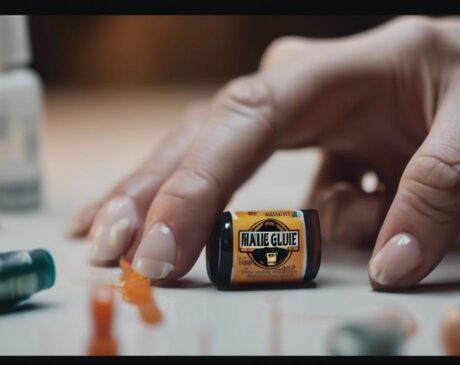Can I Use Nail Drill on Natural Nails?
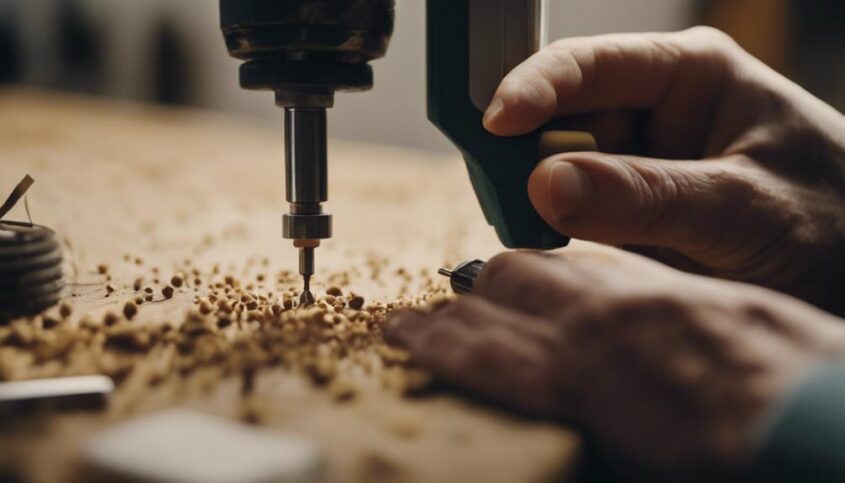
Using a nail drill on natural nails is safe with proper techniques. Nail drills are effective for shaping and maintenance, but caution is needed to prevent damage. Ensure correct speed settings and gentle pressure to maintain nail health. Learn about safety precautions and suitable drill bits for natural nails. If you want to discover more about nail drill usage, benefits, risks, and alternatives, explore the detailed information provided.
Key Takeaways
- Use a nail drill on natural nails with caution to avoid damage or weakening.
- Select low speed settings and gentle pressure for safe drilling.
- Ensure proper nail drill bit selection to prevent nail harm.
- Maintain natural nail health by avoiding overuse of the drill.
- Seek professional guidance if unsure about nail drill usage.
Understanding Nail Drills and Natural Nails

Understanding Nail Drills and Natural Nails is crucial for maintaining the health and integrity of the nail bed. Nail drills are powerful tools used in professional nail care to shape, buff, and smooth the nails. When it comes to natural nails, it is essential to exercise caution and precision when using a nail drill to avoid damage. Natural nails are delicate and can easily be compromised if not handled properly.
Nail drills come with various attachments like drill bits that serve different purposes such as filing, shaping, and removing cuticles. It is important to understand how each attachment works and how to use it correctly on natural nails to prevent over-filing or damaging the nail plate.
Furthermore, knowing the types of nail drills available and their speed settings is essential for maintaining the health of natural nails. Low-speed settings are recommended for natural nails to prevent friction and heat buildup, which can weaken the nail structure. By understanding how to properly use nail drills on natural nails, nail technicians can provide effective and safe nail care services to their clients, promoting healthy and beautiful nails.
Benefits of Using a Nail Drill
When considering the application of a nail drill on natural nails, it is important to recognize the advantages that come with its usage. One of the key benefits of using a nail drill is the ability to efficiently shape and smooth the nails, providing a professional and polished look. Nail drills also allow for precision in nail maintenance, enabling technicians to work on hard-to-reach areas and tackle tough nail surfaces with ease.
Another advantage of using a nail drill is its time-saving aspect. With the right skills and tools, nail technicians can complete nail grooming and enhancements more quickly, increasing productivity and allowing them to serve more clients effectively. Additionally, nail drills can aid in the removal of old acrylic or gel polish, making the process faster and more convenient for both the technician and the client.
Risks of Using a Nail Drill

The utilization of a nail drill on natural nails poses potential risks that necessitate careful consideration and proper handling to prevent adverse outcomes. While nail drills can be effective tools for shaping and smoothing nails, using them incorrectly can lead to various issues. It is crucial to be aware of the following risks associated with using a nail drill:
- Damage to the Nail Plate: If the nail drill is used with too much pressure or at high speeds, it can cause damage to the nail plate, leading to thinning, weakening, or even splitting of the nails.
- Risk of Infection: Improper sterilization of the nail drill or using it on multiple clients without adequate cleaning can increase the risk of infections, such as fungal or bacterial infections.
- Heat Build-Up: Friction from the nail drill can generate heat, potentially causing discomfort or even burns to the nail bed if the drill is held in one area for too long. Proper cooling breaks are essential to prevent this risk.
Safety Precautions for Nail Drilling
Implementing proper safety precautions when using a nail drill on natural nails is essential to mitigate potential risks and ensure a safe and effective nail care procedure. Firstly, always wear appropriate personal protective equipment (PPE) such as gloves and safety glasses to protect yourself from any flying nail debris. It is crucial to choose the right nail drill bit for the specific task to avoid damage to the natural nail. Additionally, maintaining the nail drill properly by cleaning and sterilizing the equipment before and after each use is vital to prevent any infections or cross-contamination. Always work with gentle pressure and at a low speed to minimize the risk of causing damage to the natural nail or surrounding skin. Lastly, if you are not trained in using a nail drill, consider seeking professional assistance to ensure the procedure is performed safely and effectively. By following these safety precautions, you can provide a high standard of care while using a nail drill on natural nails.
Step-by-Step Guide for Nail Drilling
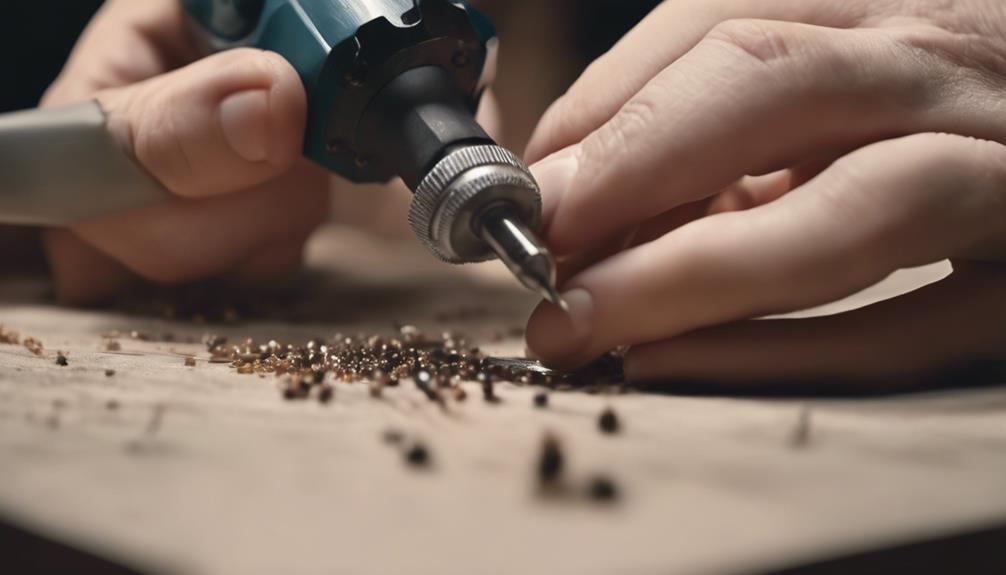
To effectively use a nail drill on natural nails, understanding nail drill safety, proper technique tips, and nail care precautions is crucial. These points will guide you in achieving precise and safe nail drilling results. By following these steps diligently, you can maintain the health and integrity of your natural nails while using a nail drill.
Nail Drill Safety
Ensuring proper safety measures when using a nail drill is essential for maintaining the health and integrity of natural nails. Here are some key safety tips to keep in mind:
- Use the right drill bits: Ensure you are using the correct drill bits for natural nails to prevent damage and ensure precision.
- Control the speed: Always start at a low speed and gradually increase as needed to avoid over-filing or causing discomfort to the client.
- Keep the drill clean: Regularly sanitize the drill bits and equipment to prevent the spread of bacteria and infections.
Proper Technique Tips
When using a nail drill on natural nails, proper technique is paramount to achieve desired results without compromising nail health and integrity. Here are some step-by-step tips to follow for nail drilling:
| Step | Description | Tips |
|---|---|---|
| Step 1 | Choose the right drill bit for the job | Use a fine-grit bit for natural nails |
| Step 2 | Start at a low speed and gentle pressure | Avoid high speeds to prevent damage |
| Step 3 | Work in one direction to avoid nail damage | Move from side to side, not back and forth |
| Step 4 | Keep the drill moving to prevent heat buildup | Pause periodically to prevent overheating |
Nail Care Precautions
Implementing nail care precautions is essential for ensuring the safety and health of natural nails during the process of nail drilling. To safeguard the well-being of your nails, consider the following precautions:
- Proper Equipment: Ensure the nail drill used is specifically designed for natural nails to prevent damage and ensure precision.
- Sanitization: Prioritize sterilizing all tools and equipment to maintain a clean and hygienic environment during the nail drilling process.
- Moisturizing: After nail drilling, moisturize the nails and surrounding skin to prevent dryness and promote nail health.
Choosing the Right Nail Drill Bits
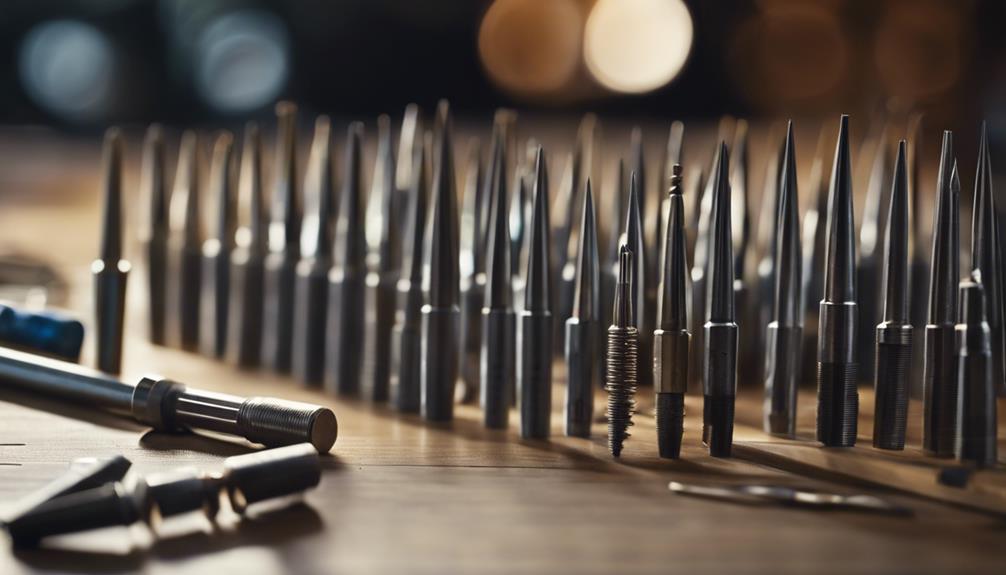
Selecting appropriate nail drill bits is crucial for achieving precise and safe results when working on natural nails. The right nail drill bits can make a significant difference in the outcome of your nail care procedures. When choosing nail drill bits for natural nails, it is essential to consider the material they are made of, the shape of the tip, and the grit level.
For natural nails, it is recommended to use carbide or ceramic drill bits as they are gentle yet effective. Carbide bits are durable and can efficiently remove product buildup or shape the nails, while ceramic bits are gentle and ideal for fine-tuning natural nails without causing damage.
In terms of tip shape, consider tapered or barrel-shaped bits for natural nails as they provide more precision and control. Additionally, opt for fine to medium grit levels to avoid over-filing or damaging the natural nail.
Alternatives to Nail Drills for Natural Nails
Exploring alternative methods for nail care on natural nails can provide gentler options for maintaining nail health and appearance. Using alternatives to nail drills can help prevent damage and promote the natural strength of the nails. Here are three gentle alternatives to consider:
- Manual Filing: Using a fine-grit nail file allows for precise shaping and smoothing of the nails without the risk of over-filing or causing damage. This method gives you more control over the amount of pressure applied to the nails.
- Buffing Blocks: Buffing blocks can be used to gently smooth the nail surface, remove ridges, and add shine. They are a great alternative to nail drills for achieving a polished look without the need for harsh tools.
- Cuticle Pushers: Cuticle pushers are essential for maintaining healthy cuticles without the need for drilling. Gently pushing back the cuticles helps promote nail growth and keeps the nail bed healthy.
Maintaining Healthy Natural Nails
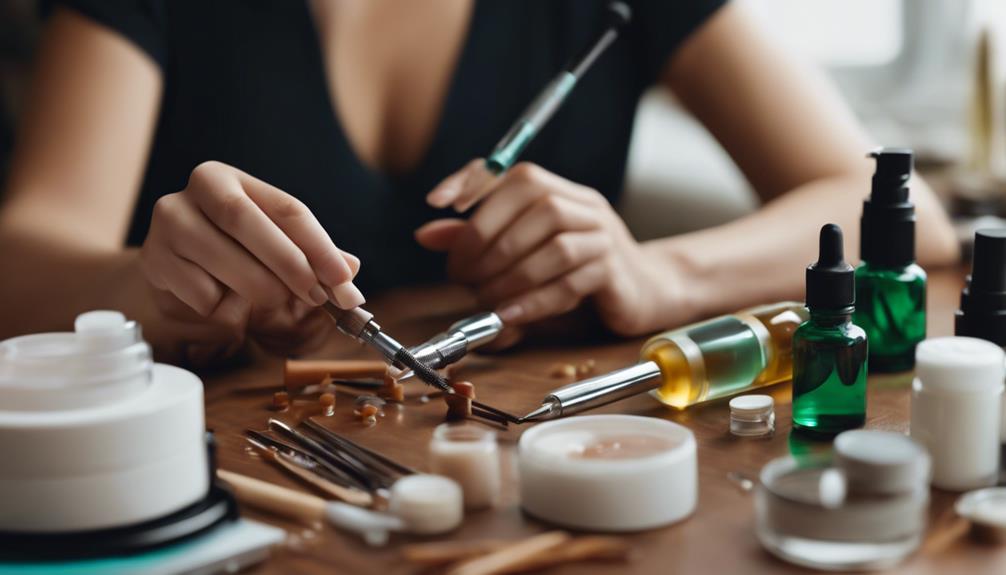
To ensure the optimal health and strength of natural nails, consistent and proper nail care practices are essential. Healthy nails are often a reflection of overall well-being, and maintaining them involves simple yet effective steps. Firstly, keeping nails clean and dry helps prevent bacteria and fungi from causing infections. Trimming nails regularly with clean clippers reduces the risk of breakage and ingrown nails. Moisturizing the nails and cuticles with a nourishing oil or cream helps to prevent brittleness and maintain flexibility. Additionally, wearing gloves while doing household chores or using harsh chemicals protects the nails from damage. Avoiding excessive use of nail products containing harsh chemicals and giving nails regular breaks from polish also promotes their health. Lastly, a balanced diet rich in vitamins and minerals, especially biotin, promotes nail strength and growth. By following these practices, individuals can achieve and maintain healthy, beautiful natural nails.
Frequently Asked Questions
Can Nail Drills Damage the Natural Nail Bed?
Nail drills can potentially damage the natural nail bed if used improperly or too aggressively. It is crucial to exercise caution, employ the correct techniques, and prioritize nail health to minimize any risks associated with nail drilling.
Is It Safe to Use a Nail Drill on Thin Nails?
When considering the safety of using a nail drill on thin nails, it is crucial to proceed with caution and utilize gentle techniques. Consult with a professional nail technician to assess the best approach for your nail health.
How Often Should I Use a Nail Drill on My Natural Nails?
Regular use of a nail drill on natural nails should be approached with caution. To maintain nail health, limit usage to once every 1-2 weeks. Prioritize gentle techniques, proper training, and quality tools to minimize damage and ensure safe maintenance of natural nails.
Can Nail Drills Cause Nail Infections or Fungus?
Nail drills can potentially cause nail infections or fungus if not used correctly. Proper sterilization, technique, and frequency are crucial to prevent such issues. Prioritize nail health and seek professional guidance for safe usage.
Are There Any Long-Term Effects of Using a Nail Drill on Natural Nails?
Long-term effects of using a nail drill on natural nails may include thinning, weakening, and damage to the nail plate. It is essential to practice caution, proper technique, and to prioritize nail health and safety.

